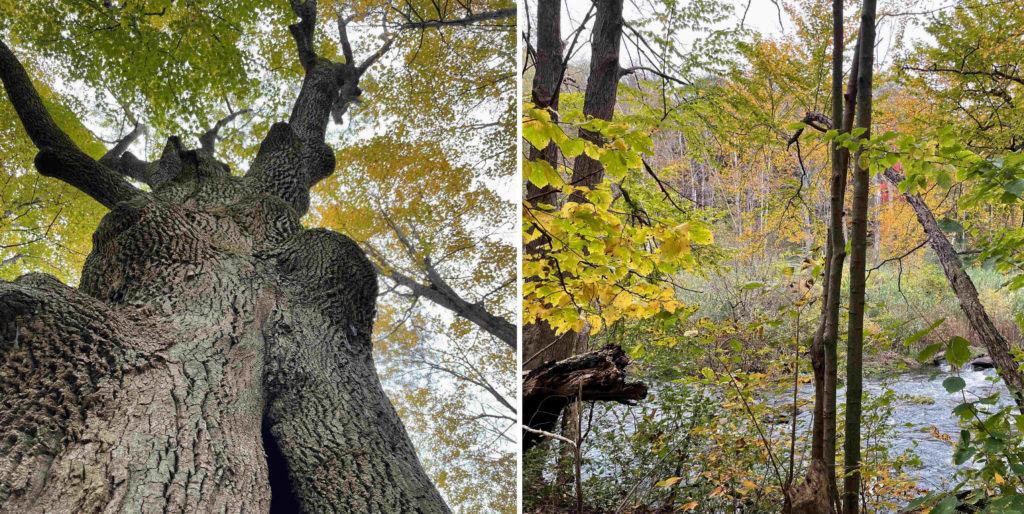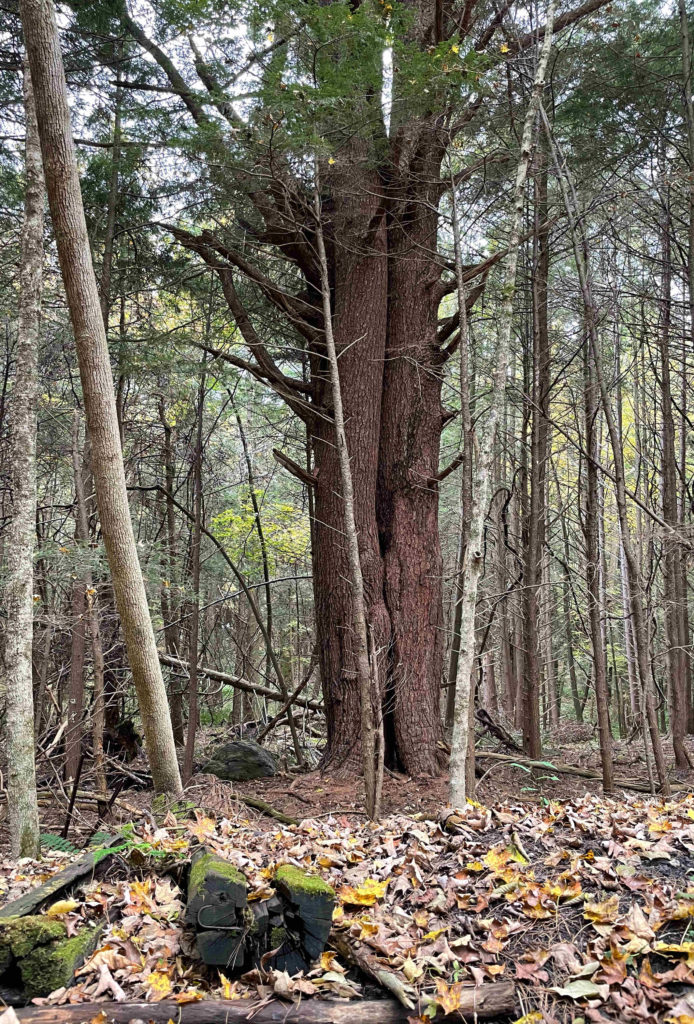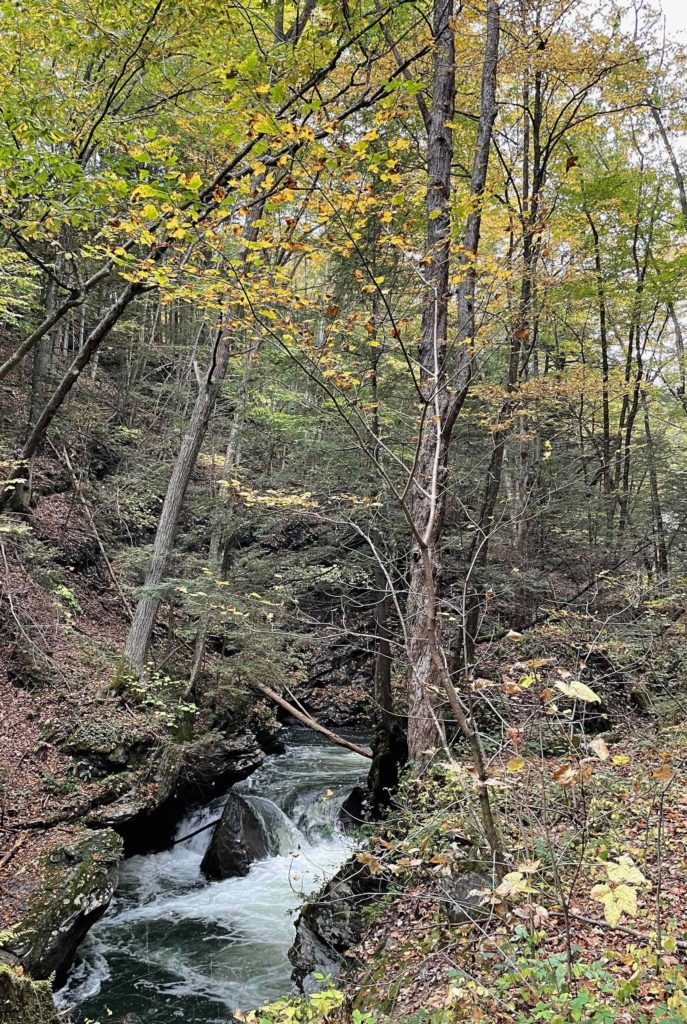Walking from one town to another on back roads I never knew before — it feels soothing, somehow. It feels like a back door or a secret passage. We’re in an old village of brick mills turned into new uses, up a street lined with quiet houses and morning glories, and suddenly, just off the sidewalk, we’re at a trail head without a sign to mark it.
It’s an old trolley line running between back yards and woods unnamed on any map I’ve seen. It’s the kind of place you have to live here to know about. Mindy Miraglia is good at finding places like this. She and Berkshire Camino are leading a guided walk on a fall morning from Housatonic to Chesterwood, and she’s invited me to come along.
We started in the village center, just up the road from the Berkshire Mountain Bakery.
The old train tracks run through here on a raised bed of earth, and the facades of buildings could have been lighted marquees when the paper mills and the passenger trains were running.

Fall color reflects on the river along the Housatonic Rail Trail.
Mindy is talking with a family from New York about the debate over cleaning up the river, how many industries once ran here, and how many decades it’s been since local towns and GE started talking about making the river clean enough to swim in again.
And I was listening. We turned onto the Housatonic Rail Trail, through a drifting shower of maple leaves. For me it was the end of a long, tense week — a feeling a lot of us know well these days — and I’d been looking forward to getting outside this morning and walking for awhile without having to think beyond it.
The pathway runs through evergreens, some of them vast old white pines. Mindy points out the remains of a few wooden ties, the only sign of the old track. We’re heading toward West stockbridge, she says, where the quarries would have dug into marble. The woods look young, slender trees all much the same size and age, the familiar signs that they were cut completely, probably less than a human lifetime ago.

Old ash trees grow among younger woods.

Mushrooms show up on a damp morning along the Housatonic Rail Trail.
We cross an old road into a new stretch of trail, and we’re heading along a new river — and this one is not one shunted between bridges and flood chutes, but running wide and fast. Here the water churns through a narrow passage in the stone, and then the bank drops away until we’re looking out far over marshland along the water.
The channel broadens and the current seems to slow. I wonder how it would feel to canoe or kayak through here, and how much skill it would take to stay afloat. You almost certainly wouldn’t stay dry.
We’re talking about the the Mohican Nation, how they lived here for centuries, and how in the early 1700s, when the colonists were surging in, the Mohican people negotiated with the Commonweath for their own township — and for a few years, a generation, they had a town here in the structure of the not-yet-state, where their elders and leaders held central roles in the town government along with White leaders.
I wonder now, how could that cooperation have grown, if some of those White town leaders had not taken advantage? I remember seeing an essay on the Mohican language in Chapin Library years ago, written by the son of John Eliot (the second missionary to the new township), who grew up speaking Mohican and English. Could a shared space like this have taken root?


In this universe, in that time … it didn’t survive. Within a generation, White colonists had taken almost all the land, illegally even by the Commonwealth’s laws. The Stockbridge Munsee community has curated new exhibit at the Mission House this summer, telling their own story, looking back and looking ahead.
And this stretch of water flashing between the deep red of the sumac trees … Mindy tells me it’s called the Williams River. Williams as in the family who took the lion’s share of the land here. As a Williams alum, from the college their resources founded, that makes me pause. I have warm memories of friendship here, talking in the small hours in college dorms, feeling new ideas shake us open, sitting on warn quartzite boulders on the ridge, playing music in the dark. And knowing this past matters to me.
And why should one man get to put his own name on a river that has existed for hundreds of thousands of years, and goes on feed the staghorn sumac 200 years after he happened to see it? In many places and many languages, we name a place by the shape of the land, a quality, a plant — I’m told the river that runs by my house is named for the shape of the mountain and valley around it.
I wonder what name this river has in Mohican, and what name it could have in English if we named it now, for itself. How would the map look, how would the land look … with new names?

